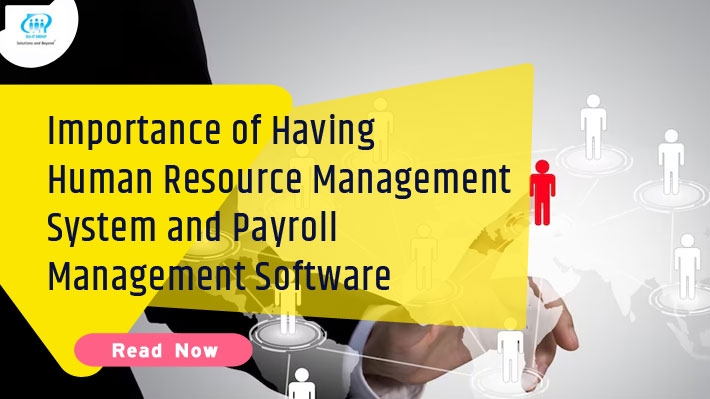HR staff members and managers also use Human Resource Management System to save time through automation. Work is streamlined for managers, employees, and the HR. A company’s success, effectiveness, and the acquisition of prospects depend on the work of HR payroll software. It also depends on the motivation and engagement of staff members.
Human Resource Management System
There are many reasons why the Human Resource Management System (HRMS) is adopted. One of them is the inability of many skilled recruiters to establish consistency in their hiring and onboarding procedures. HR professionals found that they need to give employee onboarding greater attention when considering company culture to increase employee retention.
HR staff members and managers also use HRMS to save time through automation. Work is streamlined for managers, employees, and the HR. Remote work has led to the acceleration of the automation process. By using HRMS, the objective of growth is met. Growth requires more workers, more data to monitor, and more challenging procedures to handle.
These are the following advantages of using HRMS.
- Increase in Productivity and Efficiency- Thanks to integrated HR systems, traditional HR responsibilities and tasks take less time to complete. This is because of automation through HRMS. HR staff can concentrate better on other, more crucial responsibilities when their burden is lesser. An HRMS’s data can also improve team productivity. Efficiency is maximised through data analysis.
- Everything is Handled in One Place- Because of HRMS, all data is gathered, stored, and monitored in one location. This helps in managing personal data, procedural paperwork, etc. This helps in better accessibility, better data protection, and more efficient communication between departments and teams.
- Training and Self-Service- With the help of good training from the beginning, workers have good retention. They have access to online training thanks to HRMS software. Workers can self-serve, and this leads to higher employee engagement. Employee access to documentation, training, and new processes are just a few resources available through their HRMS.
Payroll Systems
The payroll management software handles complex scenarios of payroll effectively. Whether it is backdated leave adjustments, salary revisions, or post-payroll employee joins, the payroll management software handles everything. It also handles final settlement, salary hold, and release of salary.
The payroll management software is integrated with leave records, time attendance, and timesheets. The other uses of the software are compliance, time tracking, direct deposit, salary calculations, and wage garnishments. It is also used for overtime management, reporting and analytics, leave management, statutory compliance, and multi-state payroll.
The payroll software also covers gratuity, annual leave, sick leave, maternity leave, employee provisions, leave settlement, final settlement, and off-cycle payrolls.
Therefore, small businesses, startups, large enterprises, and online businesses have great use for payroll management software. It helps streamline the payroll process for an organization. The following outputs are expected from payroll software:
- Salary and Pay Register
- Pay Slips
- Payroll Reconciliation
- Salary Audit Report
- Bank Transfer File or Letter
Other benefits of using a payroll are:
- Gain agility,
- Increase efficiency
- Minimize the risk of error with one system for payroll, timesheets, and leave management.
- Integrate with local HR software
- Stay compliant with local law
- Leave management solution
Functions of Payroll Management Software
Payroll management software helps track the cost of an organization, automates the task, calculates bonuses, and generates automatic pay slips. This helps to streamline an organization’s functions. Other functions of payroll software are payroll management, reduction of error, and time saving.
Many such software come with intuitive interfaces, customisable modules, and robust reporting features. They are equipped with a powerful panel that maintains an up-to-date record. The record may consist of new employees joining the team, leaves, and employee termination cases.
Payroll software also helps in handling complex situations pertaining to leave adjustments and salary revisions. Its features include managing tax withholdings, calculating paychecks, and tracking employee hours. Organisations can have greater control over the payroll processes for a seamless workforce experience.
While implementing a payroll software or system, it is essential to ensure that the employee’s shared information is updated and accurate. The software should also cater to the organisation’s unique needs. It should also take into consideration the organisation’s complexity, size, needs and budget.
Outsourcing Payroll Management
Many third parties offer the service of curating and customizing payroll management software that meets the necessary objectives of an organization. However, there should be a clear communication line between the service provider and the organization. This is because the service providers can correctly input the employees’ information and their salaries.
Every payroll software must be distinctive because every organization has different salary packages, salary audit reports, and financial settlements. Therefore, we can see why each organization needs adaptable human resource management systems and payroll management software.
